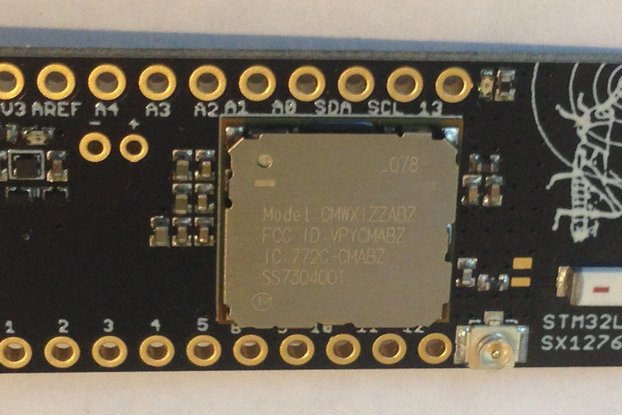
This product is no longer available for sale.
The seller may be offering an improved version or it may be hanging out on the beach, enjoying the retired life.
I am selling a bladeRF SDR with transverter board, a 3D printed enclosure, and necessary cables. This gives you everything you need to operate an SDR between 60kHZ to 3.8GHz. This kit goes for $640 (…
Read More…I am selling a bladeRF SDR with transverter board, a 3D printed enclosure, and necessary cables. This gives you everything you need to operate an SDR between 60kHZ to 3.8GHz. This kit goes for $640 ($420 bladeRF x40 + $220 Transverter board). It's a high quality setup with an active development community. Here are the descriptions from Nuand's website:
Out of the box, the bladeRF can tune from 300MHz to 3.8GHz without the need for extra boards. Through open source software such as GNURadio (live image), the bladeRF can be placed into immediate use. With its flexible hardware and software, the bladeRF can be configured to operate as a custom RF modem, a GSM and LTE picocell, a GPS receiver, an ATSC transmitter, or a combination Bluetooth/WiFi client, without the need for any expansion cards. All of the bladeRF host software, firmware, and HDL is open source, and available on GitHub.
Highlights:
More Information:
Transverter Board key features:
The XB-200 is a block up-down converter that greatly expands the bladeRF’s lower frequency range. The transverter’s lower end frequency range extends down to 60kHz making the transverter board suitable for LF/MF/HF/VHF applications.
The transverter has low insertion-loss, low-noise RF bypass switches that enable the bladeRF to seamlessly enable or bypass the transverter without having to dismount the expansion board. The RF switches provide an easy way of expanding the frequency range, not replacing it, meaning that the transverter board does not have to be unplugged to use the bladeRF’s original frequency range. RX can easily be at 1MHz, while TX is at 3GHz.
The RX and TX paths each have a set of 3 filters, at the 50MHz-54MHz (6 meter band), 149MHz-159MHz band, and 206-235MHz bands. There are also pairs of SMA connectors that will let users plug their own band filters into the RF path. To achieve really high filter performance, all of the passives in the RF paths are high-Q, low-ESR, low-DCR, and at most 2% tolerant components.
The LO synthesizer has been upgraded to an ADF4351 to improve the phase noise and total system SNR. The synthesizer also draws its reference from the 0.050ppm (50ppb) factory calibrated VCTCXO. The whole clock synthesis compartment is shielded by a thick aluminum RF shield.
The transverter also features, C API and HDL controlled GPIO pins. These GPIOs are fully configurable IO pins that allow for the transverter to control amplifiers, filters, antenna systems, LEDs, etc.

$89.99
Free Shipping!

$39.95
Free Shipping!

$45.00
Free Shipping!

$636.65 $749.00
Free Shipping!
By clicking Register, you confirm that you accept our Terms & Conditions
We recognize our top users by making them a Tindarian. Tindarians have access to secret & unreleased features.
We look for the most active & best members of the Tindie community, and invite them to join. There isn't a selection process or form to fill out. The only way to become a Tindarian is by being a nice & active member of the Tindie community!
